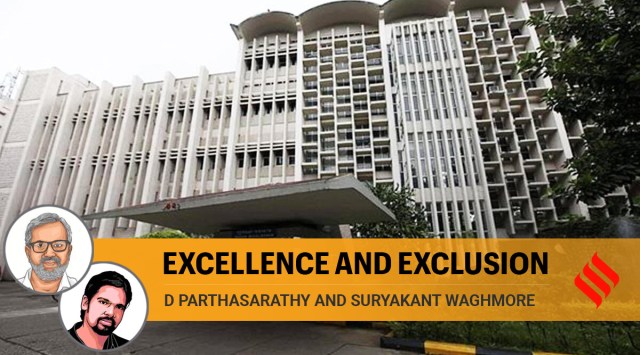- India
- International
The case of Prince Jaibir Singh’s admission to IIT Bombay
🔴 It highlights lack of interest in taking affirmative action policies seriously, advancing the goals of inclusion
 IIT Bombay (File Photo)
IIT Bombay (File Photo)The recent Supreme Court judgment directing one of India’s Institutions of Eminence, IIT Bombay, to allot a seat in the BTech programme to Prince Jaibir Singh, a Dalit student from Ghaziabad, starkly brings out how India’s premier institutions signal a lack of empathy, a formal bureaucratic rationality that has little understanding of India’s social divisions and infrastructural inequities, and a lack of imagination when it comes to fulfilling their constitutional obligations towards social justice, No wonder, the judges of the Supreme Court chose to exercise their constitutional powers to ensure “complete justice”. The phrase itself can be traced back to B R Ambedkar’s distinction between “formal” and “substantive” equality, and his stress on the role of the state to both equalise opportunities and ensure better representation for the most marginalised. In turn, this distinction goes back to the fear expressed by the German sociologist Max Weber regarding the decline of substantive rationality, and the dominance of formal rationality as a consequence of the bureaucratisation of modern societies. For Weber, as for Ambedkar, substantive rationality and substantive equality ensure complete justice, an imagination and comprehension of which is often sorely lacking in the best of our institutions. When formal rationality becomes fused with the ignorance and arrogance of caste Hindu practices, bureaucracy becomes both hostile and cruel.
For Prince Jaibir Singh, the failure of our institutions to provide alternative options of cash, cheque or other instruments, or allow for late payment with or without a fine is the most disabling effect of institutional hostility to Dalits and other disadvantaged groups. Behind this failure is a deep disinterest in taking affirmative action policies seriously, a lack of capacity to think through ways of providing quality education while also advancing the goals of inclusion. Equally, this instance reflects a buying in into the illusory inclusion of digital India sloganeering rather than a critical academic perspective on addressing social realities. These stem from a belief in technical solutions, and taking for granted positions of privilege.
Students like Prince already have to struggle through initial layers of barriers in the form of coaching classes, before they get through the hallowed portals of IITs, where they face other forms of discrimination and humiliation. In hostels and classrooms, in dining halls and playgrounds, upper castes express their privilege in a thousand ways through snubs, snide remarks, failing to recognise their learning needs, or even the circumstances they have had to overcome in getting into the IITs.
One way in which the institutions and their processes could be made more sensitive and empathetic is by increasing the representation of faculty and administrators from “communities which have not had so far representation in the State”, to quote Ambedkar. The ongoing Special Recruitment Drive for SC/ST/OBC/EWS through the Mission Mode Recruitment (MMR) — long resisted by many IITs — is, therefore, a welcome one. If at least some of these newly- recruited faculty rise to leadership positions, one could hope for a genuine transformation towards “complete justice”, to ensure that the trauma caused to students like Prince is not repeated. More importantly, it can democratise elite academic spaces, make them compassionate and culturally conducive for all learners.
The actual conduct of the MMR does not, however, inspire much hope. Responding to a missive from the Ministry of Education, and fearing a halt to the regular recruitment cycle, the recruitment process appears to be rushed, with little evidence of due diligence in the design of the processes, guidelines, and criteria, and with little to no discussion of important issues of merit, exceptional ability, judgement of quality, and assessment of research and teaching abilities. These would require a deliberative process, a consultation with education experts, an explicit awareness of the excellent body of research on social exclusion and discrimination, and a dialogue with those academic scholars from marginal backgrounds who have managed to break through barriers to make a name for themselves.

IITs, for instance, enjoy a flexible faculty recruitment policy and such flexibility mostly works in the interest of un-reserved candidates. However, for MMR, an absence of clear direction from state agencies has resulted in much variation in recruitment processes, minimum criteria, relaxations, and waivers given for age or exceptional qualifications, and screening procedures. Constitutional mandates and Government of India orders regarding the roster system and the provision of relaxations tend to be flouted quite blatantly. Illegitimate limits are set to the number of faculty to be recruited under the Mission Mode. Exceptional candidates who have applied are not recommended under the general category, and the competition for these positions is made tougher than for general candidates.
 The top-down decision making is reflected in the design and implementation of the shortlisting criteria and screening procedures, and there appears to be a lot of arbitrariness in interpreting and implementing national guidelines for reservations in faculty positions across different institutions. The online process of screening, interviewing, recruitment seminars, and faculty interaction is stressful, and it is not clear why the process cannot be made more relaxed and friendly for the candidates, now that pandemic related restrictions are substantially relaxed. At the same time, the large number of applications, especially from candidates with exceptional quality, attests to the faith that these candidates have in the state to ensure social justice.
The top-down decision making is reflected in the design and implementation of the shortlisting criteria and screening procedures, and there appears to be a lot of arbitrariness in interpreting and implementing national guidelines for reservations in faculty positions across different institutions. The online process of screening, interviewing, recruitment seminars, and faculty interaction is stressful, and it is not clear why the process cannot be made more relaxed and friendly for the candidates, now that pandemic related restrictions are substantially relaxed. At the same time, the large number of applications, especially from candidates with exceptional quality, attests to the faith that these candidates have in the state to ensure social justice.
Many of these candidates with high-quality publications have hesitated to apply in response to the usual rolling advertisements available at IITs. By creating numerical criteria (as low as 49 in some cases), ignoring matters of quality and promise, and failing to relax some of the technical criteria, effectively the CHEIs may ensure that the good quality candidates are filtered out and candidates with lesser qualifications are recruited, leading to a self-fulfilling prophecy of substantiating existing prejudices about the “merit” of the “reserved” category candidates.
Ultimately whether it is the case of Prince Jaibir Singh or the improper implementation of MMR, what is evident is the lack of interest in promoting quality, and a conscious and unwitting strategy to shore up existing privileges and hierarchies. The “complete justice” that the Supreme Court urges needs far more critical investments across IITs in thinking about principles of substantive equality and substantive rationality.
This column first appeared in the print edition on November 26, 2021 under the title ‘Excellence and exclusion’. The writers are professors of sociology at IIT-Bombay. Views expressed are academic and professional
EXPRESS OPINION
More Explained
Apr 26: Latest News
- 01
- 02
- 03
- 04
- 05











































